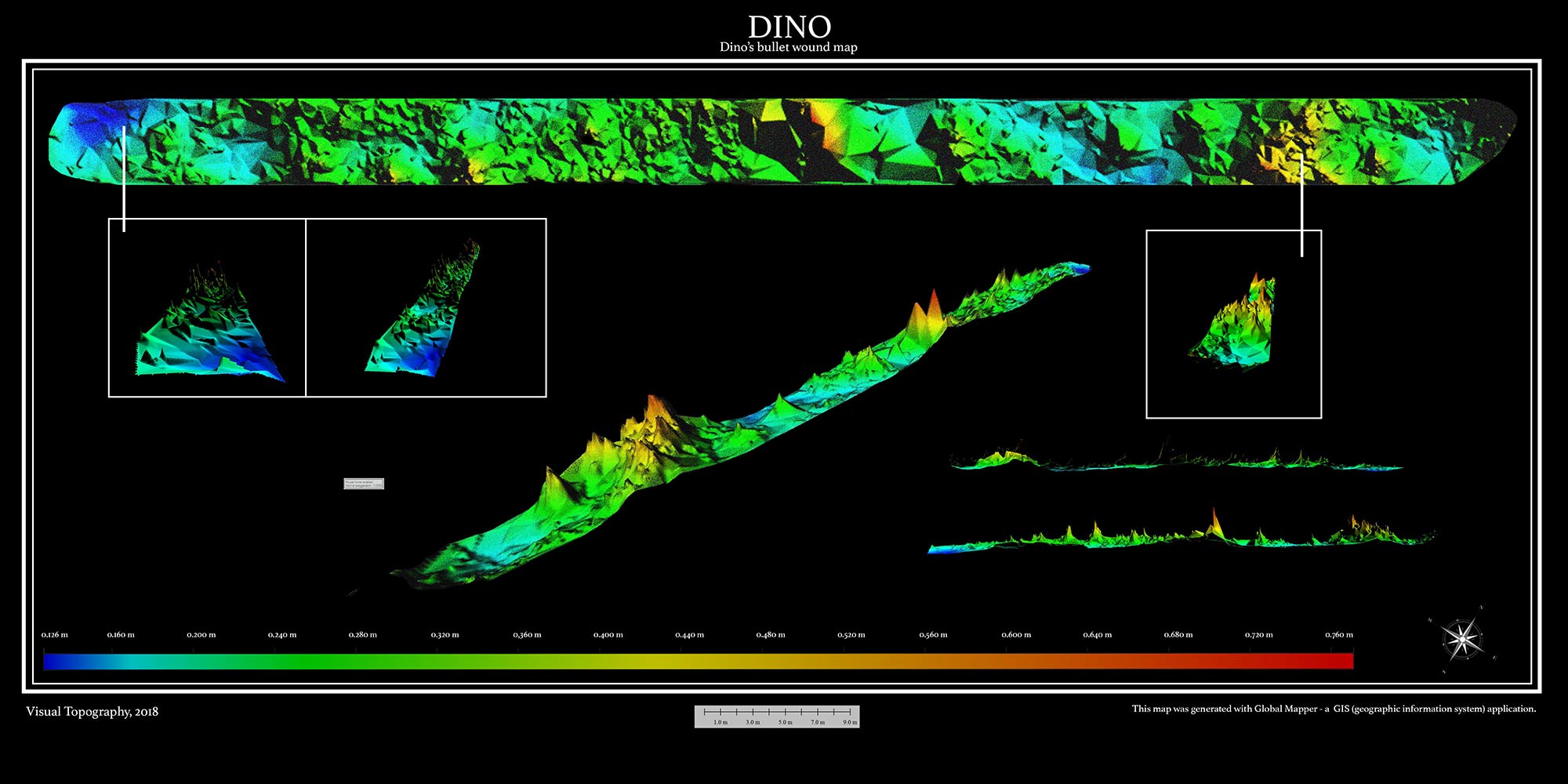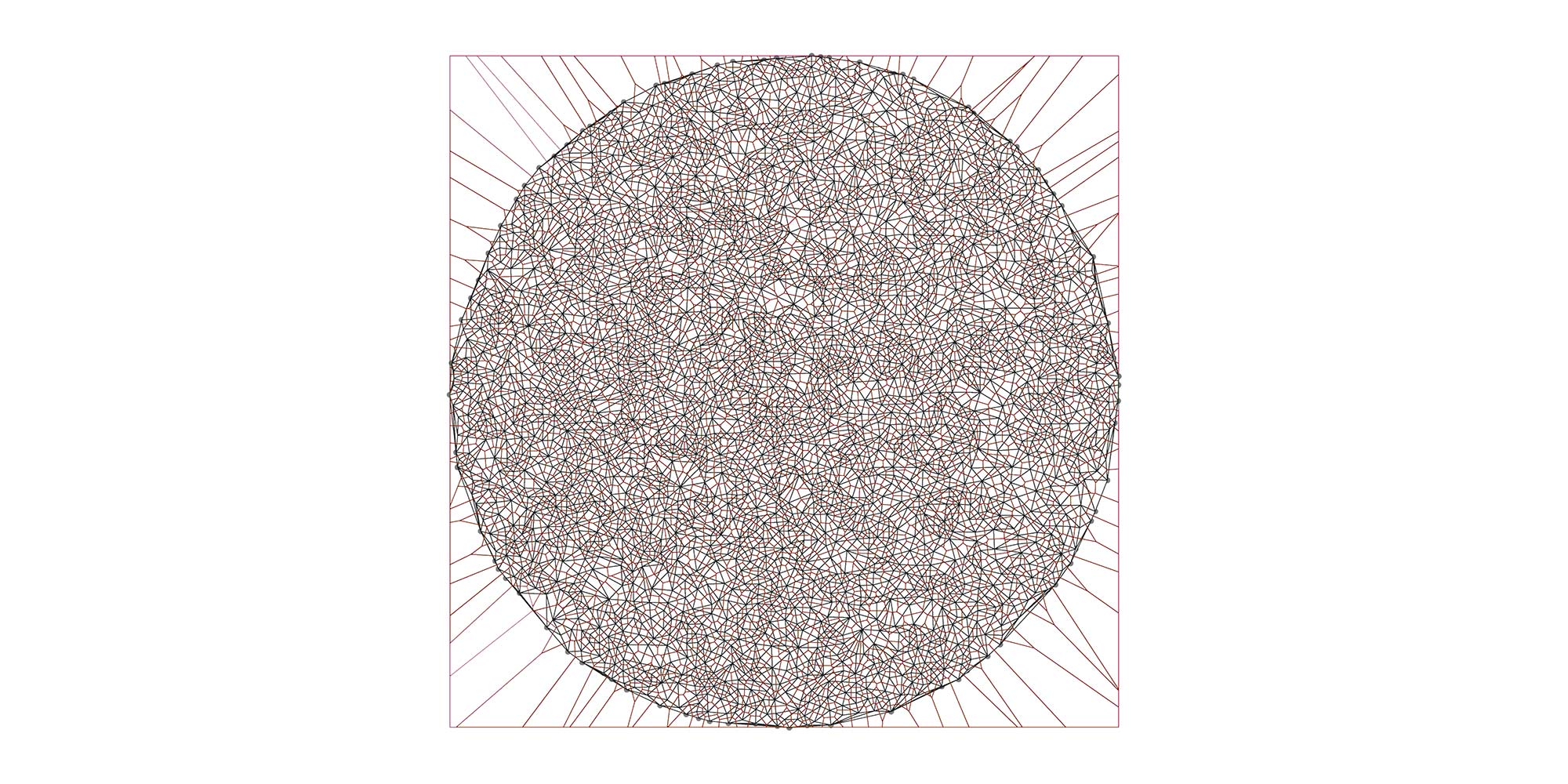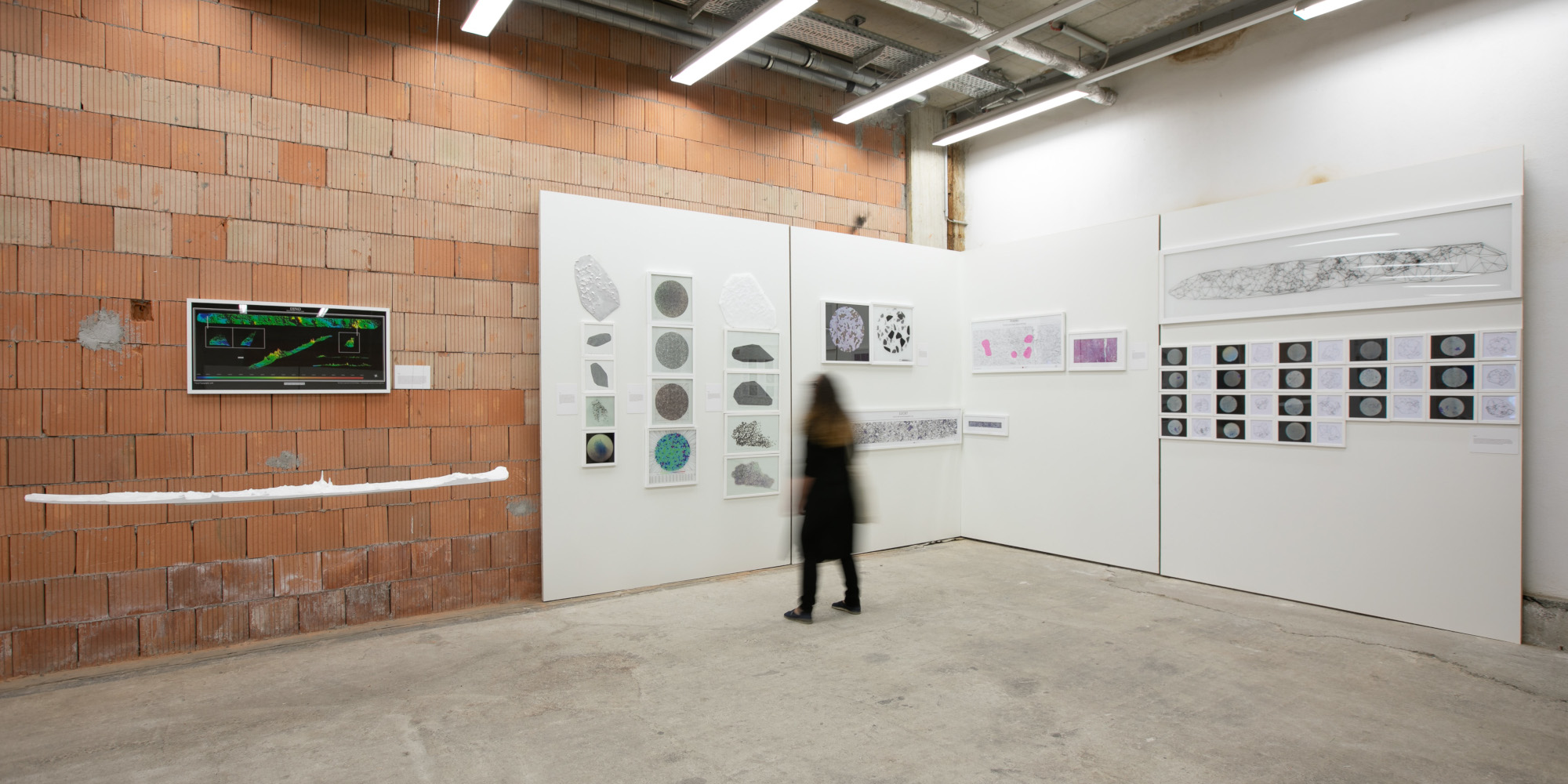Trauma Mapping is a transdisciplinary project that aims to develop a methodology for creating “geographical” maps of physical injuries, illnesses or other damages the body experiences. It seeks to explore the inner processes of suffering; to look for visual traces, left by traumatic events – their projection on the body, the organism’s reaction to them, the way the cells are being rearranged by what has happened.
Survey objects are stray animals from the streets of Bulgaria that have experienced stressful situations while living on the street – from fairly harmless to more serious ones (such as shooting) – which have a lasting impact on their lives and sometimes prove fatal. Sometimes the traumatic process is the result of deliberately caused harm, sometimes its etiology is vague, but the concept of continuing suffering and the visual processes that it leaves behind is still important.

The methodology of the project combines microbiology (hematology), computational geometry and geography. Every work within the project is connected to a particular case (a story) of a stray animal and the approach towards it is chosen accordingly.
The project is divided into 4 steps:
- The first step of the project is taking a sample directly from the injured place. When a glass slide is applied to the wound, the surface of the damaged tissue leaves a trace on it. The sample is then stained using the H&E staining method. This makes it easier to distinguish different types of cells when observing the sample through a microscope. For example, the white blood cells absorb the colors blue and red and the red blood cells absorb only red.
- The second stage of the project is extracting the data concerning the positions of the white blood cells – those are the cells that are practically in charge of fighting all sorts of antigens that have entered the body – so in a way, their concentration tells us where the injury is bigger and the traumatic process stronger. Thus, the positions of the white blood cells are turned into a simple dot graph.
- The next stage of the project is applying a computational geometry method that turns the dot graph into an info graph. For example, in the case of Dino, the method applied is the DTFE method which turns the dot graph into a 3D image, based on the concentration of the white blood cells. The higher the terrain gets, the more white blood cells there are on that spot. The main result of this stage is the created 3D relief.
- The final stage of the project includes importing the relief into the GIS and generating a “real” relief map which shows us where the trauma process is concentrated. A map in which the subject of the suffering becomes (a bit) more comprehensible.

Being a real participant in the process of pain, suffering and healing, the idea of creating a way to translate the pain into a visual language has always fascinated me. I have always been intrigued by the idea of finding a way to make visual sense of the process of suffering in beings that cannot express it verbally so that I can understand it better.
Project Credits:
- Eric Osborn (US), software engineer
- Siyana Petrova (BG), microbiologist
- Alexander Penkov, PhD (BG), geographer
- BGVet clinic, Sofia
Biography:
Aksiniya Peicheva (BG) explores the subject of possible ways of moving information between different areas of knowledge – how could several scientific fields be intertwined in order to answer a question that is only important to art? Her projects have been developed in collaboration with scientists, and are light, kinetic or interactive installations that also entail a serious theoretical aspect, the result of a long study on specific topics.
Aksiniya Peicheva (BG) was born in Kyustendil, Bulgaria, in 1990. She lives and works in Sofia. She holds a Ph.D. from the National Art Academy, Sofia, where she also teaches. She completed the post-diploma program for young artists at Institute of Contemporary Art-Sofia (2017) “Close Encounters – Visual Dialogues. School4artists.” She holds an MA (2015) and a BA (2013) in Mural Painting from the National Art Academy, Sofia.
LUCUS was her first solo exhibition, which she presented at the “Vladimir Dimitrov – The Master” Gallery in Kyustendil in 2017 and afterward in Karlsruhe, Germany at the beginning of 2018. In November 2018 she presented the project Trauma Mapping, curated by Luchezar Boyadjiev at ICA- Sofia Gallery.
Among her group exhibitions are: School4artists, ICA-Sofia Gallery, curators Iara Boubnova, Krassimir Terziev, and Luchezar Boyadjiev (2017); Water Tower Artfest (2016), curator Nia Pushkarova; LUMIX Light Art Fest (2016), Ancient Bath, Plovdiv, curator Emil Mirazchiev; DA Fest, Sofia (2015); “Sense of the Universe” (2014), Art and Science Research Foundation “Re:”, curator Tsvetana Ivanova.


